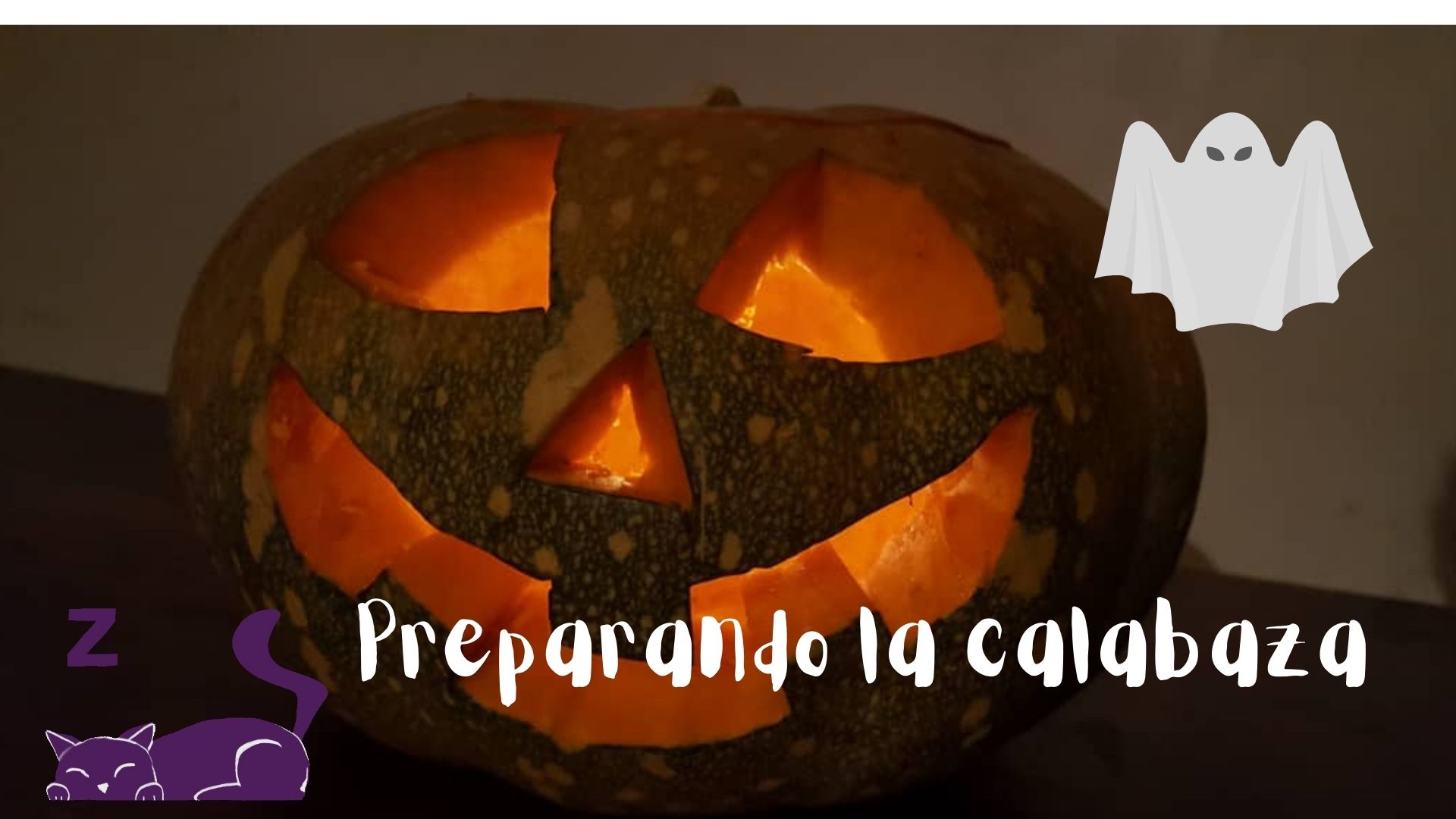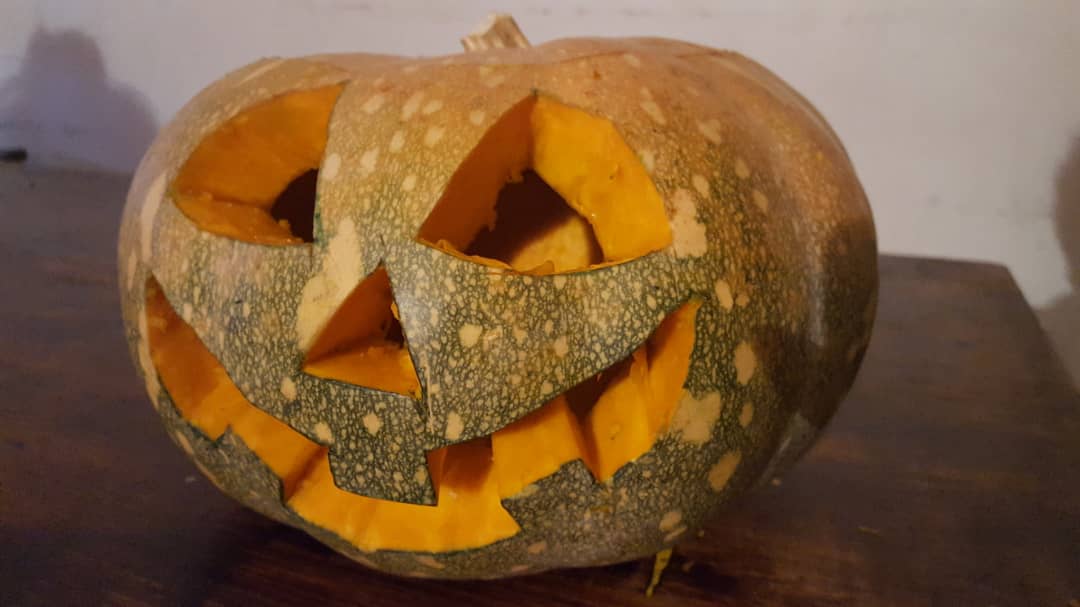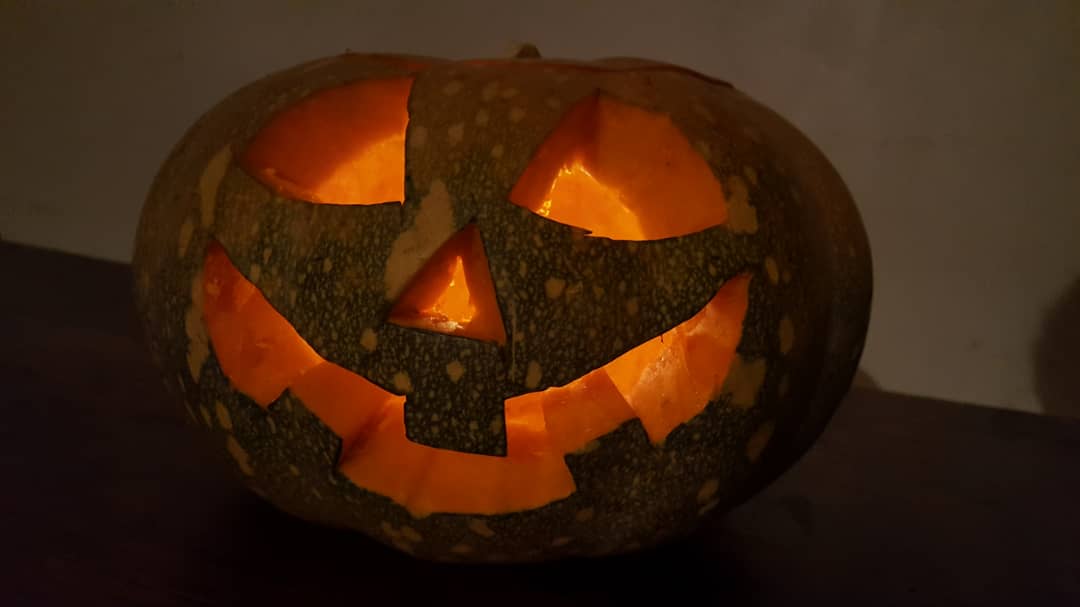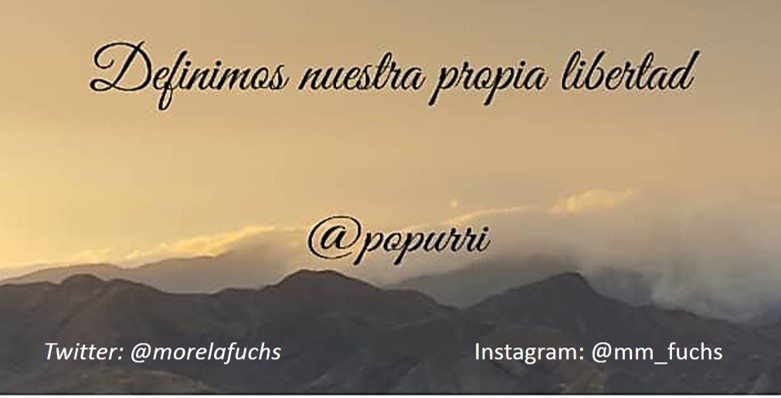Hola amigos, bienvenidos a mi blog con mi participación en el Concurso: Brujas y brujos a celebrar Halloween. Debo decirles que nunca he celebrado este día pero me parece divertido, sobre todo para los niños, así que me dije manos a la obra voy a alegrar a mi niña interior.

Comencé con un poquito de historia
La fiesta de Halloween que se realiza en varias partes del mundo tiene su origen en Irlanda, y se remonta a los antiguos Celtas. Ellos celebraban el final de la época de cosecha y la festividad llevaba el nombre de "Samhain" que significa "final de verano". Se creía que durante la noche del solsticio de otoño, el 31 de Octubre, los difuntos caminaban entre los vivos y se encendían fogatas para ahuyentar a los espíritus de los muertos. La historia de Irlanda está llena a de historias sobrenaturales y Halloween forma parte de ellas.
Con el auge del catolicismo, esta fiesta pagana se cristianizó, y comenzó a llamarse «La Víspera de Todos los Santos». La traducción en inglés es, «All Hallow´s Eve», de ahí nació la palabra «Halloween», la cual se traduce como Noche de Brujas.
Esta festividad fue llevada a los Estados Unidos por los Irlandeses y allí se convirtió en una de las más populares y se inicia el 31 de Octubre.
Hay un símbolo que se utiliza mucho en esta fiesta y es la calabaza y me puse a investigar el porqué.
La tradición de tallar vegetales y utilizarlos como linternas aparentemente es una costumbre de algunos países europeos. Se tallaban nabos y remolachas para ahuyentar los malos espíritus, esta costumbre estaba relacionada con la leyenda irlandesa de Jack, un astuto y tacaño granjero que trato de engañar al diablo y tuvo que vagar con unos carbones encendidos, dentro de un nabo tallado con agujeros, iluminando su camino y así quedó la tradicional jack-o’-lantern, una lámpara formada por una vela al interior de una calabaza tallada con ojos y boca.

Pero la calabaza es una planta originaria de América y no se llevó a Europa sino hasta después de la conquista española, así que fue en los Estados Unidos, donde se comenzó a utilizar este fruto en las festividades de Halloween. Las razones serían su mayor tamaño, su forma y su dureza, más apropiada para tallarla. Un detalle muy importante, es que se cosecha a finales de octubre. Así que, encontré la respuesta a mi interrogante.
Me fui al mercado y compre una auyama más o menos grande, de aproximadamente cinco kilos y comencé a hacer mi calabaza de Halloween, en esto me ayudo mi hija Mariangel. Acá esta todo el proceso.


- Hicimos los moldes de la sonrisa siniestra, los ojos y la nariz

- Hicimos los cortes en la calabaza

- Colocamos la velita adentro y la colocamos en la oscuridad.

Fue divertido hacer esta actividad con mi hija y ya estamos preparadas para repetirla el 31 de octubre. La calabaza o auyama como le decimos por estas tierras, la usaré para hacer una deliciosa crema de auyama.
 Muchas gracias por leer
Muchas gracias por leer

Hello friends, welcome to my blog with my participation in the contest: Witches and warlocks to celebrate Halloween. I must tell you that I have never celebrated this day but I find it fun, especially for the kids, so I said let's get to work.

I started with a little bit of history
The Halloween holiday that is celebrated in various parts of the world has its origins in Ireland, and dates back to the ancient Celts. They celebrated the end of the harvest season and it bore the name "Samhain" meaning "end of summer". It was believed that during the night of the autumn solstice, October 31, the dead walked among the living and bonfires were lit to ward off the spirits of the dead. Ireland's history is full of supernatural stories and Halloween is part of them.
With the rise of Catholicism, this pagan holiday became Christianized, and began to be called "All Hallows' Eve". The English translation is, "All Hallow's Eve", hence the word "Halloween" was born, which translates as Halloween
This holiday was brought to the United States by the Irish and there it became one of the most popular and begins on October 31.
But there is a symbol that is used a lot in this holiday and it is the pumpkin and I started to investigate why.
The tradition of carving vegetables and using them as lanterns is apparently a custom of some European countries. Turnips and beets were carved to ward off evil spirits, this custom was related to the Irish legend of Jack, a cunning and stingy farmer who tried to trick the devil and had to wander with some burning coals, inside a turnip carved with holes, lighting his way and so was the traditional jack-o'-lantern, a lamp formed by a candle inside a carved gourd with eyes and mouth.
But the pumpkin is a plant native to America and was not brought to Europe until after the Spanish conquest, so it was in the United States, where they began to use this fruit in the Halloween festivities, the reasons would be its larger size, shape and hardness, more appropriate to carve it. A very important detail is that it is harvested at the end of October. So, I found the answer to my question.
I went to the market and bought a more or less large pumpkin, about five kilos and began to make my Halloween pumpkin, in this my daughter Mariangel helped me. Here is the whole process.

We remove the seeds

We made the molds of the sinister smile, the eyes and the nose.

We made the cuts in the pumpkin.

We place the candle inside and place it in the dark.

It was fun to do this activity with my daughter and we are already prepared to repeat it on October 31. I will use the pumpkin, or auyama as we call it in these parts, to make a delicious pumpkin cream.

Thank you very much for reading

Bibliografía
https://www.ngenespanol.com/traveler/cual-es-el-origen-de-halloween-samhain/
https://www.bbc.com/mundo/noticias-45973292
https://www.muyinteresante.com.mx/historia/historia-el-origen-halloween/
https://www.bbc.com/mundo/noticias-37824661

 Las fotografías son de mi autoría tomadas con un teléfono Samsung Edge S6. La presentación inicial la realicé con el programa Canva y los separadores en PowerPoint
The photographs are my own, taken with a Samsung Edge S6 phone. The initial presentation was made with the Canva program and the separators in PowerPoint.
Las fotografías son de mi autoría tomadas con un teléfono Samsung Edge S6. La presentación inicial la realicé con el programa Canva y los separadores en PowerPoint
The photographs are my own, taken with a Samsung Edge S6 phone. The initial presentation was made with the Canva program and the separators in PowerPoint.

Translated with www.DeepL.com/Translator (free version)




















Hola linda grata y curiosa historia sobre el halloween, la auyama les quedo digna para celebración, y te remiendo con ella preparar torta, panquecas o quesillos. Saludos fue ilustrativo pasar por aqui.
Hola @evev , gracias por tu lindo comentario. He preparado torta con auyama pero panquecas no lo he hecho, voy a hacerlas. Un abrazo y bendiciones.
The rewards earned on this comment will go directly to the person sharing the post on Twitter as long as they are registered with @poshtoken. Sign up at https://hiveposh.com.
Gracias
Interesante información la que ha traído y poder entender un poco más de estas tradiciones es bien motivadora y salir de algunas dudas me tranquiliza. Una sopa licuada es riquísima amiga @popurri. Gracias por ese paso a paso del diseño de esta calabaza para ahuyentar a los difuntos. Aunque esa crema debe quedar tan rica que muchos estarán seguro a la mesa esperando por un poquito. Esos separados son hermosos...esa brujita es tierna.
Hola @lisfabian. Como no sabía mucho sobre Halloween me puse a investigar. La cremita de auyama o de calabaza, es muy rica y nutritiva, en este proceso nada se pierde porque hasta las semillas se comen. Jajajaja si las brujitas están lindas. Un abrazo y muchas gracias por esta iniciativa y por tu excelente buen humor, eso es una bendición.